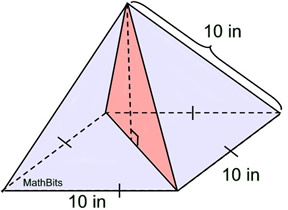

It matters, though, that she didn’t just reverse the numbers and say “One”. Remember that being interested in children’s ideas is a key to talking math with them. I did her no harm asking What is five less than four? I didn’t expect her to be able to say negative one, but I was curious about what she would say.

There is plenty of time for her to learn about negative numbers. She hasn’t developed the rule that any number minus itself is zero, although this conversation could certainly go that direction by asking about three less than three salami slices and five less than five salami slices, etc. When I ask her what four less than four is, she comfortably answers zero. Note Tabitha’s comfort with zero as a number. She has already imagined the slices so they are available as a tool. Finally, we generate the slices in a loop, passing the index of each to the CSS as another custom property -i. It will take as long to make the one extra slice as it would to make another two. Then we pass this number to the CSS as a custom property -n. MARS: Classifying Proportion and Non-proportion Situations CCSS 7.RP. First off, we decide upon a number of slices n. When I ask her What would two less be? I am offering here the opportunity to think in terms of salami slices, or to just think about numbers. As far as the HTML structure goes, we generate it with a preprocessor to avoid repetition. The second important strategy is the What if? questioning style here. It’s an easy move to ask her how many slices she wants, and then to compare that to the number of slices we actually have. I could have just given her a few pieces of salami, but that’s a lost opportunity. She asked for salami to eat while waited for the main part of her lunch. The first is turning Tabitha’s request for salami into a situation that involves numbers. Me: (Giving Tabitha the remaining salami slices) So if three slices is one less than four, what would two less be? Me: I’m sorry to say, we only have three. She asked for some salami while she waited. It was one of her favorites- salami quesadilla (house specialty). The distance from the vertical midpoint of each slice to that of the assembly is this value -y minus half a slice’s height.I was making lunch for Tabitha (who had just turned 5) one day.

The height is the diameter divided by the number of items calc(# - var(-i)*var(-h)) Moving on to the CSS, we first decide upon a diameter $d for our disc. Then we pass this number to the CSS as a custom property -n. Slicing a disc into equal partsĪs far as the HTML structure goes, we generate it with a preprocessor to avoid repetition. It could all be emulated with nested elements with overflow: hidden in order to have cross-browser support, but, for simplicity, we dissect the clip-path method in this article. Note that the following demos won’t work in Edge as Edge doesn’t yet support clip-path on HTML elements. Well, turns out this solution works like a charm, so let’s take a close look at it! My second thought was to use a circle() clipping path. If nothing was removed from the array, then the return value will just be an empty array. The first thought was that this should be doable with border-radius, right? Well, no! The thing with border-radius is that it creates an elliptical corner whose ends are tangent to the edges it joins. The splice () method is used to add or remove elements of an existing array and the return value will be the removed items from the array. Naturally, I started to think what would the most efficient way of doing it with CSS be. The bakesale gift box includes: - Signature original burnt cheesecake slice - Belgian dark. The disc had a diagonal gradient and was split into horizontal slices, offset a bit from left to right. CCSS x Carousell Our Carousell account is now live. I recently came across an interesting sliced disc design.


 0 kommentar(er)
0 kommentar(er)
